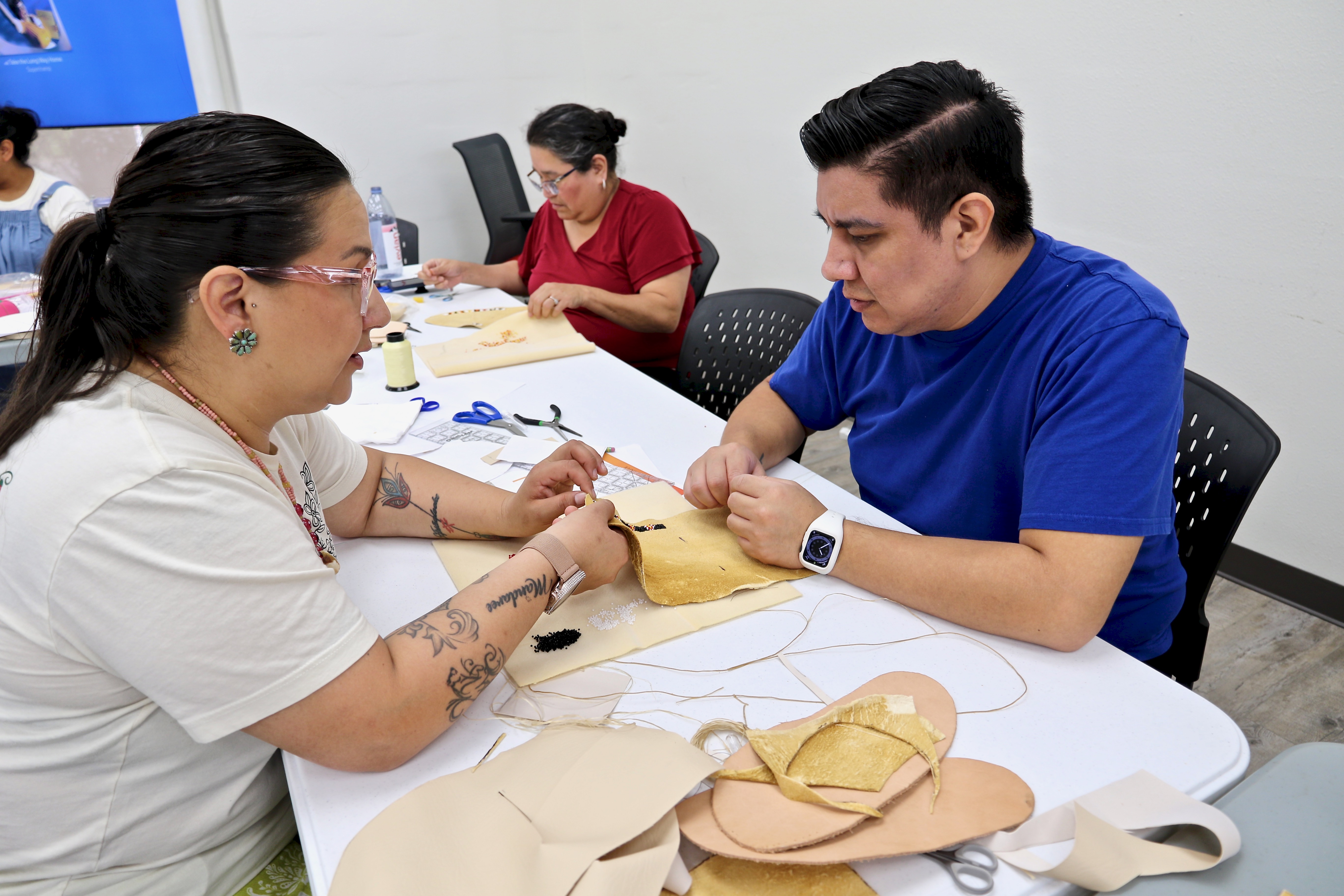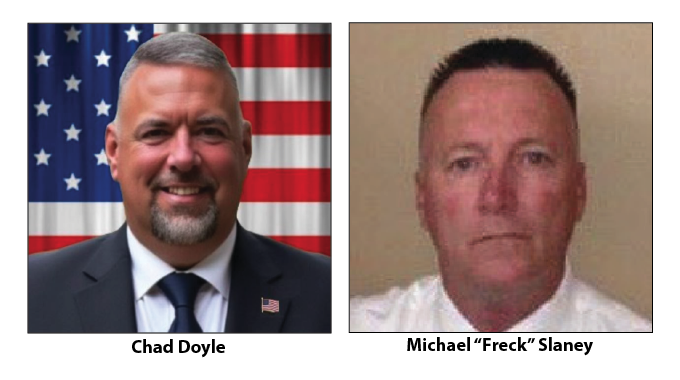Moccasin-making tradition passed along at Coushatta Tribe workshop
Published 10:31 am Monday, June 16, 2025

- Caspie Abbey of Mandaree, N.D. helps Thunder John of Lake Charles stitch his moccasins during a recent workshop in Elton. Participants actively participated in the process of creating moccasins while learning from experienced instructors. (Doris Maricle / American Press)
The Coushatta Tribe of Louisiana is working to preserve and revitalize their Native American culture and traditions while connecting future generations with their tribal roots
This week, the tribe’s Heritage Department hosted a moccasin making workshop for its members. According to Director Missy Stanford, the goal of the workshop was to provide tribal members of all ages with a tangible link to their ancestral past by teaching them a significant cultural skill.
“It is very important that we are bringing tribal members of all ages to carry on a tradition that was done by our ancestors,” Stanford said. “Moccasins hold a historical significance as traditional footwear of our ancestors, while some still wear them today. It’s nice to see the interest being shown in learning the craft.”
Trending
The workshop was led by experienced moccasin makers and beaders Caspie Abbey, from the Hidatsa, Mandan, Dakota, and Crow tribes, and her husband, Donovan, a member of the Coushatta Tribe from Mandaree, N.D.. Together they shared their knowledge of the history, artistry, and techniques of moccasin making with nearly 20 local Coushatta Tribe members.
“We like to see young and old, men and women, learn the art and teach it to others, passing it down from generation to generation,” Donovan Abbey said, noting that many attendees were new to hand sewing and beadwork. “Our goal when we leave Monday is that they will have a complete pair of moccasins to wear to the powwows or share with their grandchildren and that they pass on this knowledge.”
According to Caspie Abbey the hands-on workshop is crucial to preserving traditions, honoring the tribe’s legacy and building community by providing a space for tribal members to connect and share their stories.
Donavan Abbey added that the initiative demonstrates the Coushatta Tribe’s deep dedication to maintaining their cultural identity.
Participants learned about the history and cultural importance of moccasins and the cultural significance across various tribes. While some created moccasins for themselves, others created a meaningful expression of care and tradition.
Looking ahead, Donovan Abbey also hopes the skills will empower tribal members to become self-sufficient by selling their handmade creations.
Trending
Caspie Abbey said moccasins are not merely footwear, but hold sacred meaning and are often cherished family heirlooms. The moccasins incorporate family designs and geometric motifs, with specific bead colors and symbols like crosses and flowers reflecting each tribe’s heritage.
She noted that each tribe has its own distinct style, stitch, and beadwork.
The styles can range from contemporary to traditional, frequently crafted from smoke elk and deer hide, with many created for ceremonial purposes such as powwows and special dances. Some are even known as “going home shoes,” designed for burial rituals to symbolize the journey to the afterlife.
“The moccasins are a symbol of who we are and where we are going,” Caspie Abbey said, noting that the moccasins they make and wear reflect the unique history, culture and traditions of the tribe.
Bryson Robinson, 18, of Elton, who is learning to make moccasins shared his motivation for learning, stating he needs a pair for his dance regalia and has always wanted to master the craft. He also stressed the deep cultural importance of moccasins to Native Americans, pointing out that the beads and colors represent different tribes.
Thunder John of Lake Charles was excited to make his first part of moccasins.
“I’m trying to learn the craft because I’ve never had a pair of moccasins that I’ve made before,” John said.
Aletha Istre of Elton, who attended with her seven-year-old daughter, Grai “Grey Bear,” underscored the importance of passing down these traditions.
“I think it’s very important to teach the next generation so we can keep the tradition alive,” she said.
Loretta Williams of Elton echoed the sentiment.
“I think we need to keep it going, especially for the ones who enjoy dancing,” Williams said.
Williams, who has made moccasins with her son, is now hand-stitching a pair for her granddaughter to wear at the powwow.
Carolyn Langley of Kinder found the process of working on the moccasins and beadwork to be a relaxing experience. Having taught herself to do beadwork three years ago, this was her first attempt at making moccasins, a new skill she hopes to share with the children she babysits.
Issiah Richard of Topsy and his wife Justine, both new to moccasin making, were enthusiastic about creating their own footwear.
Issiah is looking forward to powwow dancing in his own creation, while Justin is crafting moccasins to complement her husband’s red, black, orange regalia, also incorporating a touch of her mother’s Navajo heritage into her design.
”I’m trying my best,” she said. “I’ve made some mistakes here and there.”





